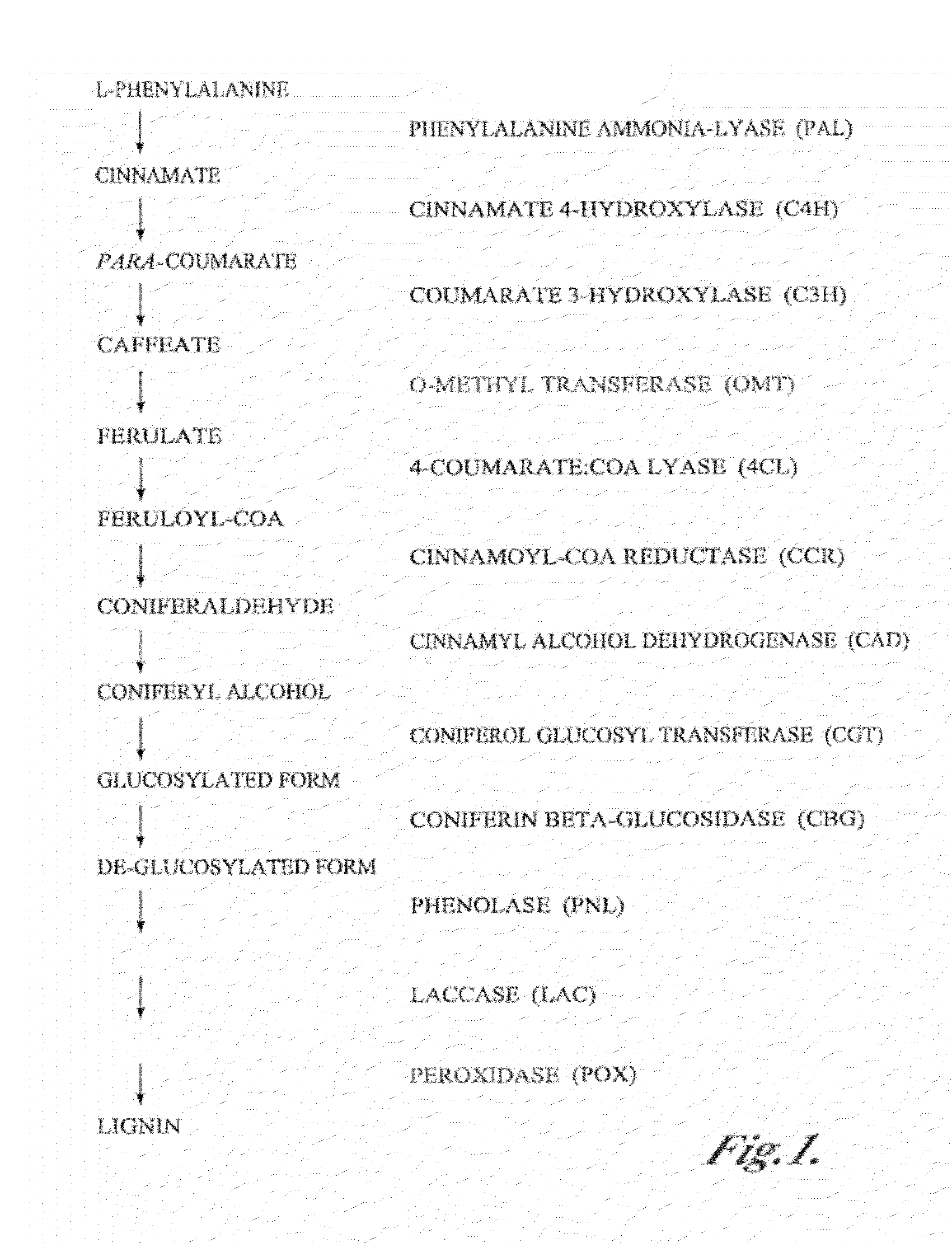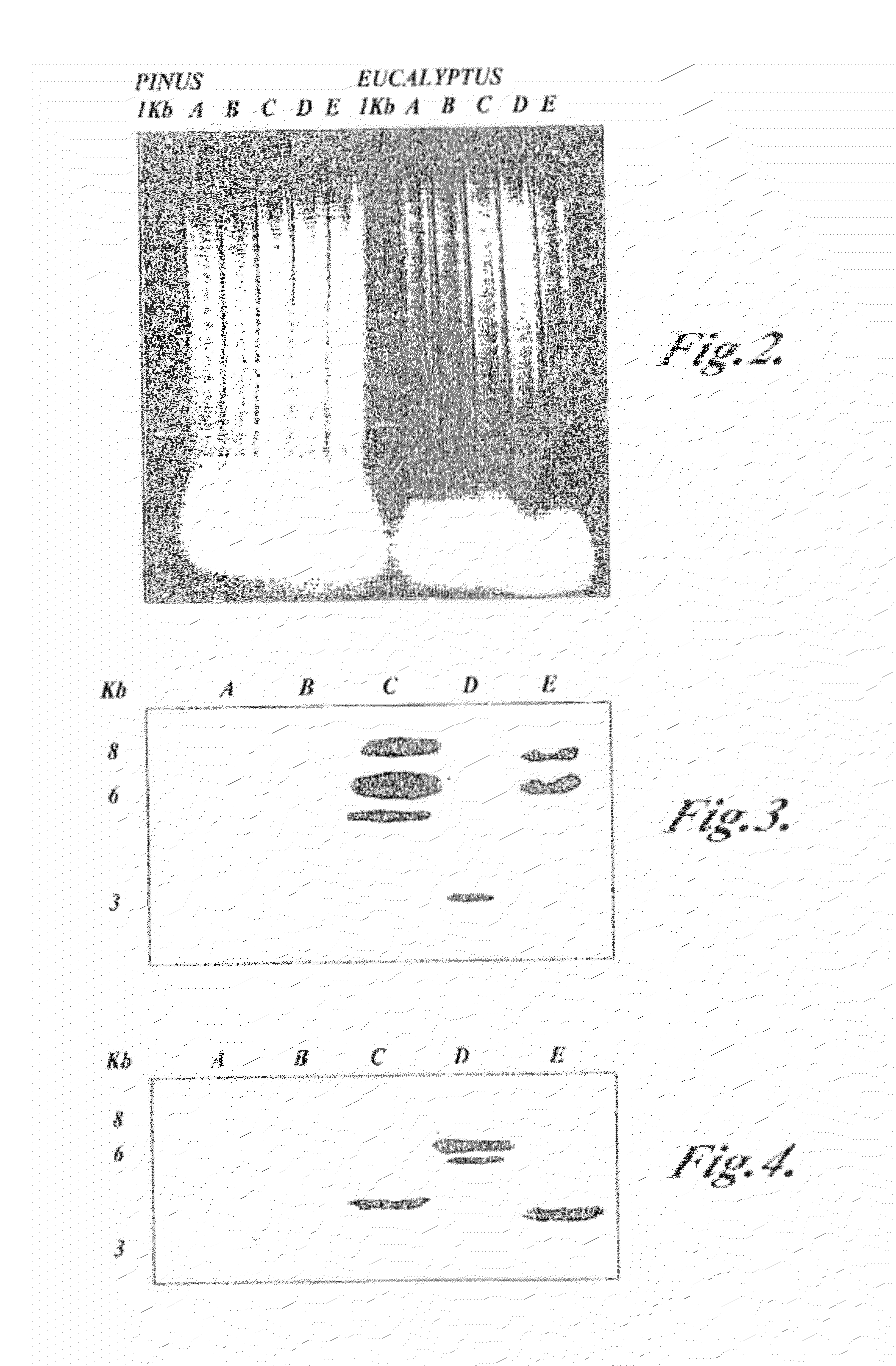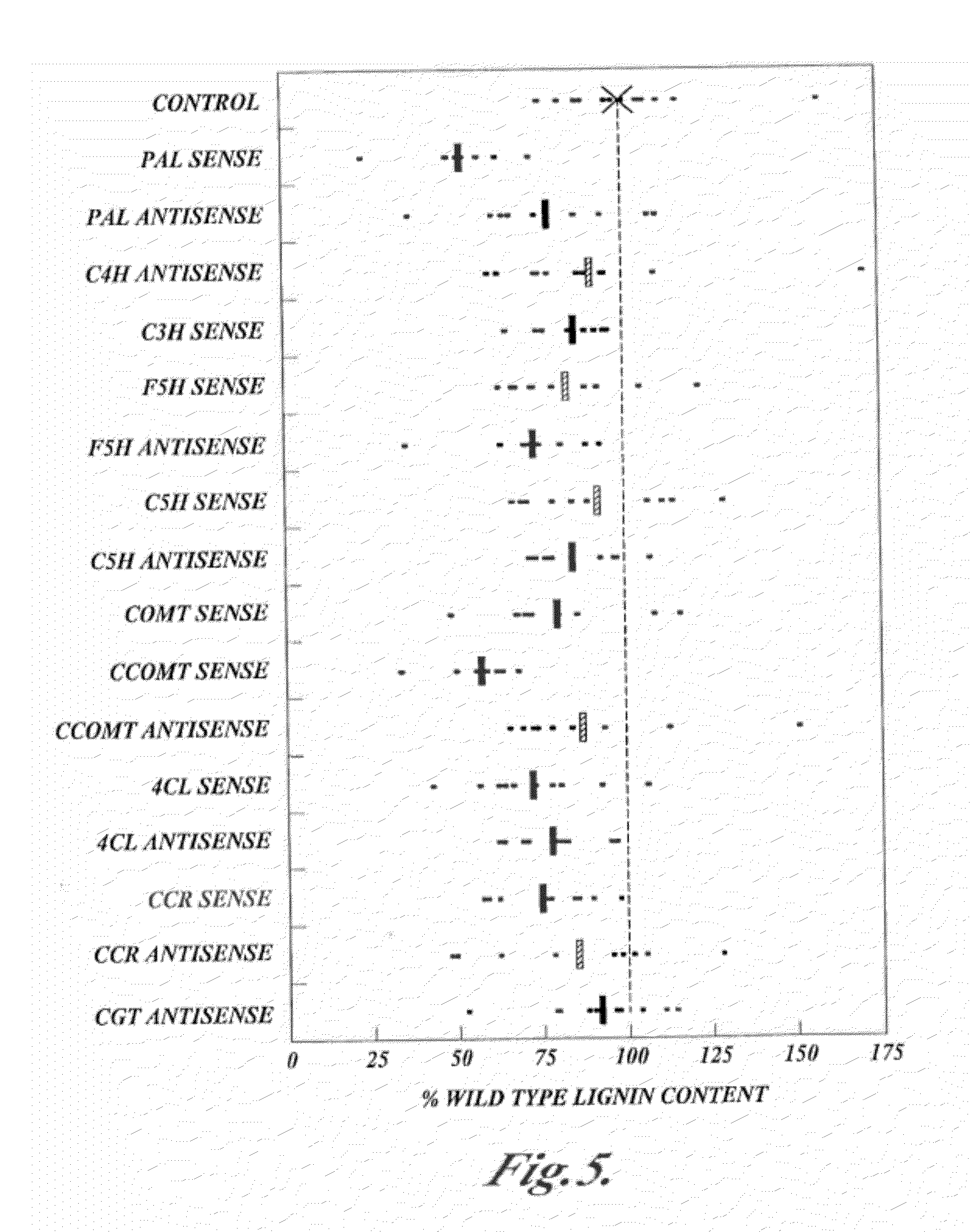Materials and methods for the modification of plant lignin content
a technology of plant lignin and lignin derivative, applied in the field of polynucleotides, can solve the problems of increasing the level of undesirable waste products, increasing the cost, and requiring considerable resources to be employed
- Summary
- Abstract
- Description
- Claims
- Application Information
AI Technical Summary
Benefits of technology
Problems solved by technology
Method used
Image
Examples
example 1
Isolation and Characterization of cDNA Clones from Eucalyptus erandis
[0106]Two Eucalyptus grandis cDNA expression libraries (one from a mixture of various tissues from a single tree and one from leaves of a single tree) were constructed and screened as follows.
[0107]mRNA was extracted from the plant tissue using the protocol of Chang et al. (Plant Molecular Biology Reporter 11:113-116, 1993) with minor modifications. Specifically, samples were dissolved in CPC-RNAXB (100 mM Tris-Cl, pH 8.0; 25 mM EDTA; 2.0 M NaCl; 2% CTAB; 2% PVP and 0.05% Spermidine*3 HCl) and extracted with chloroform:isoamyl alcohol, 24:1. mRNA was precipitated with ethanol and the total RNA preparate was purified using a Poly(A) Quik mRNA Isolation Kit (Stratagene, La Jolla, Calif.). A cDNA expression library was constructed from the purified mRNA by reverse transcriptase synthesis followed by insertion of the resulting cDNA clones in Lambda ZAP using a ZAP Express cDNA Synthesis Kit (Stratagene), according to ...
example 2
Isolation and Characterization of cDNA Clones from Pinus radiata
[0113]a) Isolation of cDNA Clones by High Through-Put Screening
[0114]A Pinus radiata cDNA expression library was constructed from xylem and screened as described above in Example 1. DNA sequences for positive clones were obtained using forward and reverse primers on a Perkin Elmer / Applied Biosystems Prism 377 sequencer and the determined sequences were compared to known sequences in the EMBL database as described above.
[0115]Based on similarity to known sequences from other plant species, the isolated DNA sequences were identified as encoding the enzymes C4H (SEQ ID NO: 2, 3, 48, 49, 92, 124, 125, 155-160, 162 and 163); C3H (SEQ ID NO: 4, 50-52, 93, 126, 127, 151 and 152); PNL (SEQ ID NO: 5, 81 and 183); OMT (SEQ ID NO: 6, 53-55, 94 and 175); CAD (SEQ ID NO: 7, 71, 95 and 164); CCR (SEQ ID NO: 8, 58-70, 96, 128-134 and 167); PAL (SEQ ID NO: 9-11, 45-47, 97, 98, 122, 123 and 176, 247 and 248); 4CL (SEQ ID NO: 12, 56, 57...
example 3
Use of an O-methyltransferase (OMT) Gene to Modify Lignin: Biosynthesis
[0119]a) Transformation of Tobacco Plants with a Pinus radiata OMT gene
[0120]Sense and anti-sense constructs containing a polynucleotide including the coding region of OMT (SEQ ID NO: 53) from Pinus radiata were inserted into Agrobacterium tumefaciens LBA4301 (provided as a gift by Dr. C. Kado, University of California, Davis, Calif.) by direct transformation using published methods (see, An G, Ebert P R, Mitra A, Ha S B, “Binary Vectors,” in Gelvin S B, Schilperoort R A, eds., Plant Molecular Biology Manual, Kluwer Academic Publishers: Dordrecht, 1988). The presence and integrity of the transgenic constructs were verified by restriction digestion and DNA sequencing.
[0121]Tobacco (Nicotiana tabacum cv. Samsun) leaf sections were transformed using the method of Horsch et al. (Science, 227:1229-1231, 1985). Five independent transformed plant lines were established for the sense construct and eight independent trans...
PUM
 Login to View More
Login to View More Abstract
Description
Claims
Application Information
 Login to View More
Login to View More - R&D
- Intellectual Property
- Life Sciences
- Materials
- Tech Scout
- Unparalleled Data Quality
- Higher Quality Content
- 60% Fewer Hallucinations
Browse by: Latest US Patents, China's latest patents, Technical Efficacy Thesaurus, Application Domain, Technology Topic, Popular Technical Reports.
© 2025 PatSnap. All rights reserved.Legal|Privacy policy|Modern Slavery Act Transparency Statement|Sitemap|About US| Contact US: help@patsnap.com



